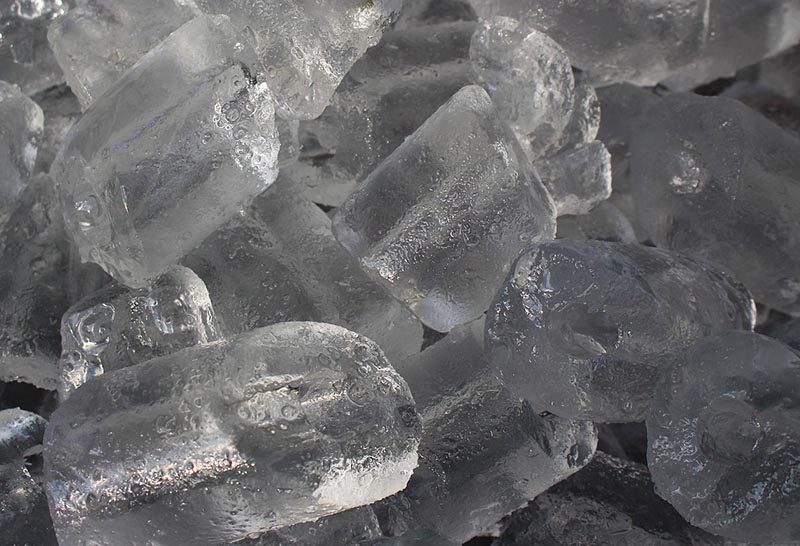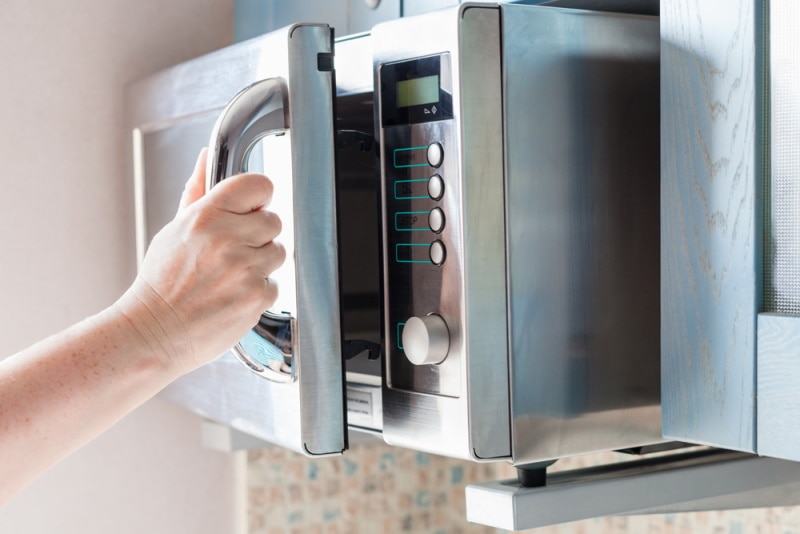Why Doesn’t Ice Melt in The Microwave? What Science Tells Us
-
Pete Ortiz
- Last updated:

Even if you’re unsure how they function, you likely know that microwave ovens work in unconventional ways. In fact, outside of heating food, they don’t act too oven-like. Plastic is safe to microwave, but metal is off-limits. Food’s ready immediately, but you don’t have to preheat. And if you’ve ever tried to defrost a frozen brick of meat straight from the freezer, it’s almost as slow as letting it thaw on the counter. This is because microwaves do not actually produce heat.
Melting ice and defrosting frozen foods is surprisingly time-consuming in a microwave. But once you understand how microwaves work to heat food, it’s easy to see why ice would be slow to melt, making for a quick, fun science experiment.
How Microwaves Heat Water
Even though we credit the appliance, water is the true hero in the microwave. Dishes would never get warm without it, no matter how long you leave your food spinning. Microwaves don’t produce heat. Instead, a magnetron produces microwave radiation.
The electromagnetic waves move into the chamber and reflect off the metallic walls. As they bounce around, the waves create an electric field that shifts nearly 2.5 billion times per second. Food absorbs these waves, and any water in it starts to feel the effects.
Water Heats Food
Water consists of a negative oxygen atom and two positively charged hydrogen atoms, both of which sit toward one side of the oxygen atom rather than resting opposite one another. The molecules act as dipoles. Charged atoms try to align with the microwave’s ever-changing electric field, causing them to move back and forth rapidly. Friction develops between the molecules, creating heat that transfers to the rest of the food via conduction.
The heating action of water explains why foods can come out tasting dry or rubbery and how some foods cook faster than others. With a water content often exceeding 90%, fruits and vegetables will heat in less time than meats, cheeses, or grains.

Why Doesn’t Ice Melt in the Microwave?
As a liquid, H2O molecules form loose hydrogen bonds as they pass one another. The positive hydrogen atoms attract the negative oxygen atoms of nearby molecules. The molecules are in constant motion, but each usually has bonds with about three other molecules at any time.
When water cools, the molecules lose heat energy and begin slowing down. They freeze almost entirely under 32°F, with each molecule forming a firm hydrogen bond with four neighbors. Interestingly, water molecules have extra space between them in this solid state than when the molecules were more active in water form. More space between molecules means lower density, and that’s why ice floats in water!
Strong hydrogen bonds are why microwaves melt ice slowly. When microwave radiation passes the lattice structure of H2O molecules, the bonds are less willing to break than they would in liquid form. The bonded molecules can’t rotate to align with the electric field. They don’t vibrate and produce friction, meaning the microwave radiation can’t generate heat.
Eventually, the ice will start to melt. Once water forms on the surface, the radiation can excite the liquid molecules, generating heat energy. That heat energy will pass to the ice, melting it further.
Why Use the Defrost Function
Water and ice heat at different rates in the microwave. Liquid water will heat quickly as it freely rotates with the oscillating electric field. Ice is slow to heat, as the molecules will take much more coaxing to wiggle loose from their hydrogen bonds.
That can be problematic when you want frozen food to defrost evenly in the microwave. The quickly rotating water molecules will rapidly heat whatever it’s touching, but the ice (and any surrounding food) will stay cold. Some parts will come out cooked, and others will still be frozen.
To thaw food evenly in the microwave, use low-power or defrost modes. The defrost function makes the microwave cycle on and off, releasing radiation for short bursts. Liquid water molecules agitate and generate heat. When the microwave cycles off, the water molecules have time to cool and dissipate heat to the rest of the food. Heating takes longer, but you won’t have to deal with overcooked sections.

Final Thoughts
Ice will melt in the microwave, but don’t expect it to heat like your average food item. It offers an intriguing look into the unique ways microwaves operate. At the least, it’s an easy experiment to try at home, but knowing why ice doesn’t melt also helps demystify the microwave’s inner workings and offers valuable insights into getting the best results.
Featured Image Credit: Dean Moriarty, Pixabay
Contents


